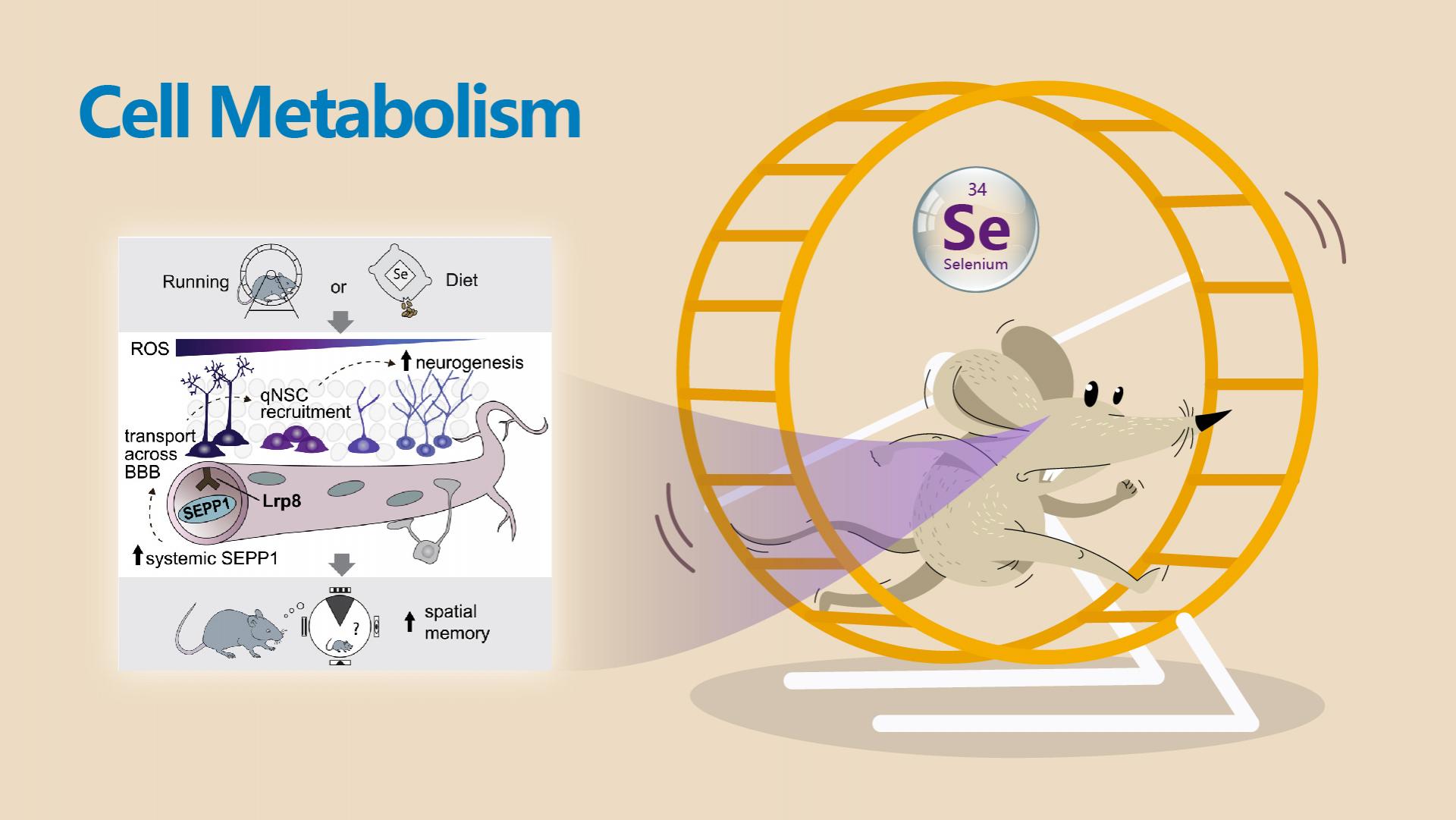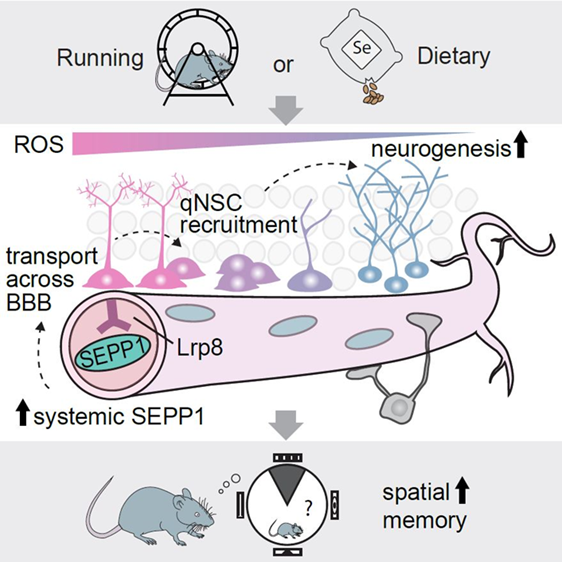Professor Shengtao Hou’s team from the School of Life Science at the Southern University of Science and Technology (SUSTech), together with Dr. Tara Walker of the Queensland Brain Institute (QBI) in Brisbane, Dr. Gerd Kempermann of the German Center for Neurodegenerative Diseases (DZNE) in Dresden, and Academician Yizheng Wang’s team from the Brain Science Center of Beijing Institute of Basic Medical Sciences (IBMS), recently published a series of studies revealing new understandings of how our brains cope with stroke and aging.
Their first paper, entitled “Selenium mediates exercise-induced increases in adult neurogenesis and reverses the learning deficits induced by hippocampal injury and ageing,” was published in Cell Metabolism, a top international academic journal. Their study revealed a new mechanism of exercise-mediated adult neurogenesis and dietary selenium supplementation on cognitive impairment caused by aging, cerebral ischemia, and hypoxia-induced hippocampal injury.
The second paper, entitled “Phosphorylation of Ser562/563 on GLT-1 by PKCα increases glutamate excitotoxicity in mice ischemic model,” was published by Prof. Hou’s team and Academician Yizheng Wang’s team from the Brain Science Center of Beijing Institute of Basic Medical Sciences (IBMS) in Signal Transduction and Targeted Therapy. Their study demonstrated that PKCα-mediated phosphorylation of glutamate transporter-1 (Glt-1) at specific sites plays a key role in neuronal cell death in the acute phase of cerebral ischemia, providing new opportunities for the development of innovative drugs to treat stroke.

The mechanism by which exercise promotes adult neurogenesis and improves cognitive function has always been one of the hottest issues in the field of neurogenesis. This study found for the first time that exercise induces the massive secretion of selenium transporter selenoprotein P (Selenoprotein P). It reshapes the spatial distribution of elements in the body through its receptor low-density lipoprotein-related protein 8 (LRP8) and significantly increases the level of selenium in brain tissue. As an efficient antioxidant, selenium significantly reduces the oxidative stress of neural stem cells in the dentate gyrus of the hippocampus, induces the proliferation and differentiation of neural stem cells into new neurons, and finally improves spatial cognitive function.

Figure 1. Selenium mediates exercise-induced increases in adult neurogenesis and reverses the learning deficits induced by hippocampal injury and ageing
Further research found that dietary supplementation with selenomethionine (Selenomethionine) mimics the effects of exercise-mediated neurogenesis. The protective effect of dietary selenium supplementation on spatial cognitive impairment caused by aging and brain injury was confirmed in aging (18-month-old mice) and hippocampal injury model mice, respectively.
Prof. Hou’s research focuses on the relationship between neurovascular coupling and cognitive function and has trained many talented students and scientists for related research. He established the SUSTech-UQ Joint Centre for Neuroscience and Neural Engineering (CNNE) with the Queensland Brain Institute (QBI) to jointly train graduate students.
Zhan Zhuo, the first jointly trained Ph.D. student, is the co-first author of the Cell Metab paper. Dr. Yuqing Wang, a visiting scholar at Prof. Hou’s lab, is the first author of the Signal Transduction and Targeted Therapy paper. Prof. Shengtao Hou is the co-corresponding author on both papers.
Prof. Hou’s team also published a paper entitled “40 Hz Light Flicker Alters Human Brain Electroencephalography Microstates and Complexity Implicated in Brain Diseases” in the leading journal Frontiers in Neuroscience. The research was completed by three undergraduates, Yiqi Zhang, Zhenyu Zhang, and Lei Luo, from the Department of Biology at SUSTech.
Their study uses 64-channel EEG recording equipment to study 20 adult volunteers receiving 40 Hz light flickering stimulation, which lays the foundation for further clinical applications. The device has also obtained a national patent.

Figure 2. 40 Hz light flicker alters human brain EEG microstates and complexity implicated in brain diseases
The above studies were funded and supported by the National Natural Science Foundation of China (NSFC), the Natural Science Foundation of Guangdong Province, the Shenzhen Science and Technology Innovation Commission, and the Shenzhen-Hong Kong Institute of Brain Science-Shenzhen Fundamental Research Institutions.
Paper links:
Cell Metabolism: https://www.cell.com/cell-metabolism/fulltext/S1550-4131(22)00005-5
Signal Transduction and Targeted Therapy: https://www.nature.com/articles/s41392-022-00897-0
Frontiers in Neuroscience: https://doi.org/10.3389/fnins.2021.777183
To read all stories about SUSTech science, subscribe to the monthly SUSTech Newsletter.
Proofread ByAdrian Cremin, Yingying XIA
Photo By